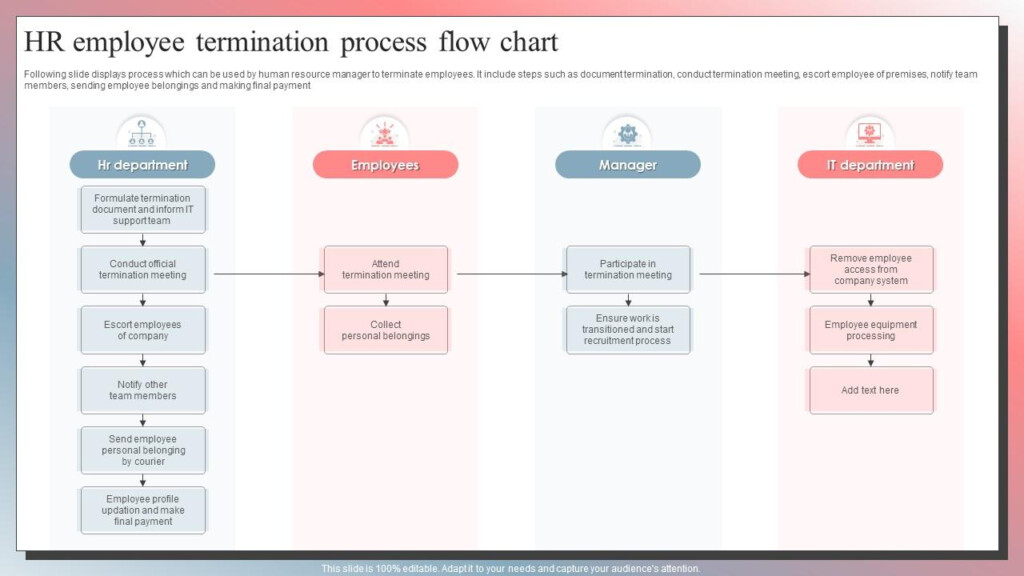Employee offboarding is just as important as onboarding when it comes to managing a workforce effectively. The offboarding process involves transitioning employees out of the company in a smooth and respectful manner. A well-structured offboarding process can help protect the company’s reputation and maintain positive relationships with departing employees.
One way to visually represent the employee offboarding process is through a flow chart. This visual tool can help HR managers and other stakeholders understand the steps involved and ensure that nothing is overlooked during the offboarding process.
Employee Offboarding Process Flow Chart
Key Steps in an Employee Offboarding Process Flow Chart
1. Notification: The offboarding process typically begins with the employee providing notice of their intent to leave the company. This step involves notifying HR and relevant stakeholders, setting an end date, and discussing any outstanding projects or responsibilities.
2. Exit Interview: Conducting an exit interview allows the departing employee to provide feedback on their experience with the company. This step can help identify areas for improvement and enhance the employee experience for future employees.
3. Return of Company Property: Employees should return any company property, such as laptops, access badges, and keys, before their departure. This step ensures that the company’s assets are accounted for and can be reused or repurposed as needed.
4. Benefits and Payroll: HR should ensure that the departing employee receives any final payments, such as accrued vacation time or bonuses, and understands their options for continuing benefits coverage after leaving the company.
5. IT Access: IT should revoke the departing employee’s access to company systems and accounts to protect sensitive information and prevent unauthorized access after the employee has left the company.
Benefits of Using a Flow Chart for Employee Offboarding
1. Clarity: A flow chart provides a clear visual representation of the offboarding process, making it easier for all stakeholders to understand their roles and responsibilities.
2. Efficiency: By outlining each step in the offboarding process, a flow chart can help streamline the process and ensure that no important tasks are overlooked or forgotten.
3. Compliance: Following a structured offboarding process outlined in a flow chart can help ensure that the company remains compliant with relevant laws and regulations governing employee exits.
4. Communication: A flow chart can serve as a communication tool, allowing HR managers to effectively communicate the offboarding process to departing employees and other stakeholders.
